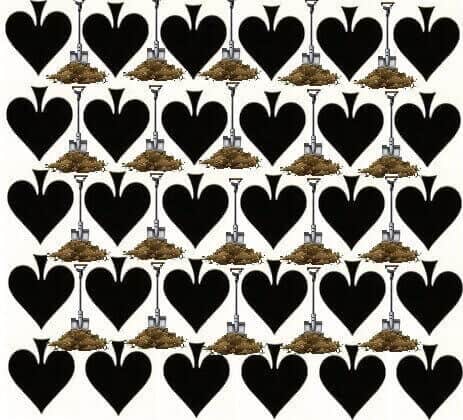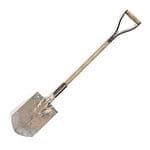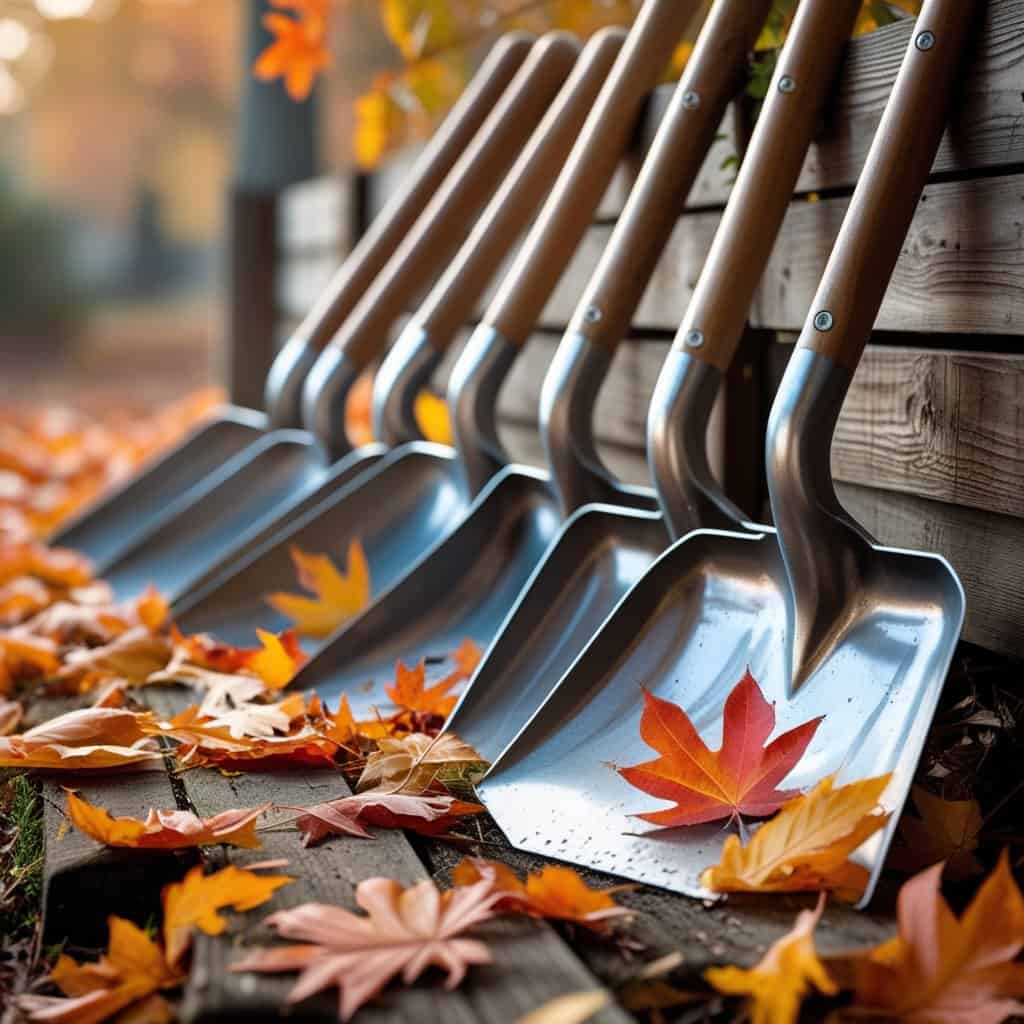Each type of spade has a unique purpose, so it’s important to know which one to use for the job. With the proper spade, you’ll be able to quickly dig, move, and transplant soil, gravel, snow, and other materials. So, whether you’re a gardener, landscaper, or homeowner, familiarize yourself with the different spades available and know which is best for the task.
Table of Contents
Why Care About The Various Types Of Spades?
The spade is one of the most critical tools in any landscaping or gardening arsenal. You can easily dig holes, move soil, and transplant plants with a spade. Having a suitable spade will:
- Make your job easier and improve your results
- Avoid damage to your plants
- Be less inefficient and tiring
- Save time and energy
- Finish the job quickly and easily
- Easier on your body overall
Spades are a standard tool that turns over the soil, removes weeds, and cultivates plants. The four spades most commonly used are the digging spade, transplanting spade, and edging spade.
Each type of spade has a specific purpose, and all of these spades are made from sturdy materials like metal or plastic and have a sharpened edge that can easily cut through the soil.
Types of Spades And Their Alternate Names
1. Garden or Digging spade:
This spade has a narrow, pointed blade and is ideal in clay soil or other hard soil types to loosen the compaction. Clay soil can be tough to dig, so it’s essential to loosen it up first.
Then, begin digging a layer at a time until you reach your desired depth. Digging one layer at a time will make it easier to remove the soil without damaging the plant roots.
Most people call the digging spade a shovel. Digging spades come in various sizes and have a flat blade used to dig and cultivate the soil. It is also helpful in levelling out dirt in a garden or flower bed.
Another name for this spade is the pointed spade as the blade has a point that is helpful when digging and if the handle of this spade is long some may call it a long handle spade.
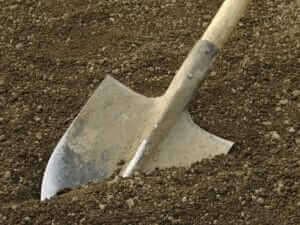
2. Transplant, Ditching, Drain spade:
A ditching, drain or wood drain spade has a pointed blade to dig trenches and ditches. This spade is also utilized to transplant plants and trees so it is also called a transplant or perrenial spade. The transplant spade has a long, narrow blade to divide perennials and other plants and move them to a new location.
They come in various sizes and generally have a pointed blade 3 to 5 inches wide. Other uses and names include: tile spade, track spade, tree spade, potatoe spade, bulb spade, narrow spade, trenching spade, wood drain spade, rabbiting and fencing spade.
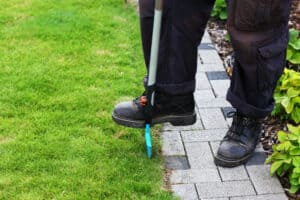
3. Edging or Border spade:
An edging spade is a great tool for creating clean, crisp edges around your lawn, small trenches, or furrows for planting.
However, if you need to make a deeper trench or furrow, you can purchase an edging spade with a serrated blade. These blades can be 4 to 8 inches wide and are great for breaking through tough soil or roots.
This spade comes in two version. One version is a half moon shape that has a thin, serrated blade for cutting and shaping lawn edges. The second version is similar to the trenching shovel with little curavature to the blade and the addition of serrated edges.

4. Post-hole spade or Post-hole digger:
This spade/digger has two long, curved blades and a pointed end for digging holes for fence posts, trees, or other landscaping features. The blades are usually 6 to 8 inches wide; the handle is 18 to 24 inches long, and the weight is usually 2 to 4 pounds. There is also a fence spade or grafter spade which has a thin, pointed blade for installing fence posts.
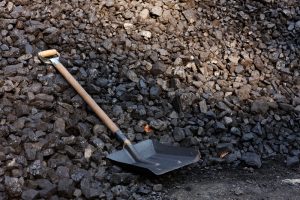
5. Scoop spade:
This spade has a square blade for moving loose materials like grain, coal, soil, sand, or snow. So it is often referred to as a grain shovel, coal shovel, sand shovel, snow shovel. The difference between the types of scoop shovels is that each is made with different materials in different sizes.
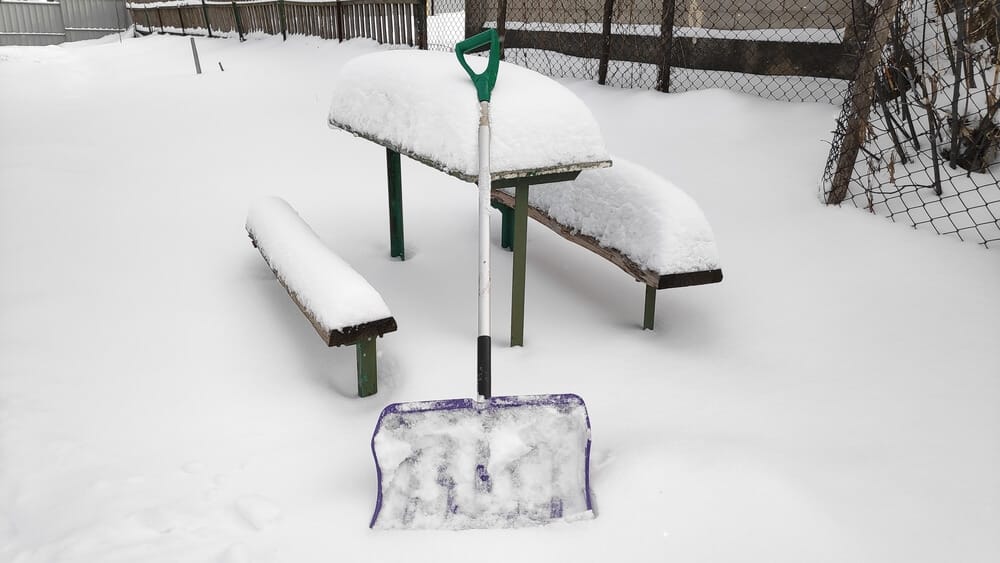
7. Turf Spade
A turf spade of landscapers spade has a narrow, flat blade for removing sod or turf. Some models have teeth at the blades end to dig under the turf.
8. Mini spade or Hand spade:
The hand spade or mini spade are miniature versions of a large spade and have shorter handles with a small, pointed blade for digging around small plants or vegetables in tight spaces to remove debris or weeds. A mini spade is not for heavy-duty tasks.
It is also known by the terms: garden trowel, small spade and garden spade. The length and width of of this handheld spade will determine what term is utilized to describe it.
For instance, a garden spade is a type of spade that has a long, narrow blade and a blunted end for digging in the soil and moving plants. The blade is usually 9 to 12 inches wide, the handle is usually 18 to 24 inches long, and the weight is usually 2 to 4 pounds.
9. Unconvential Spades
Mattock
A mattock has a long, curved blade and a pointed end to dig in the soil and remove roots. Most people do not consider the mattock a spade or shovel but instead, refer to it as an axe. However, the mattock is often utilized as a spade for trenching in hard or clay soil. The blade is usually 9 to 12 inches wide, the handle is usually 18 to 24 inches long, and the weight is usually 2 to 4 pounds.
Pick
A pick has a long, narrow blade and a pointed end for breaking up soil and removing rocks. Like the mattock, most do not consider a pick a spade or shovel and refer to it as a type of axe. However, the pick is also used as a spade for trenching in hard or clay soil.
How To Use A Spade
Now that you know about the different types of spades, it’s time to learn how to use them. Here are some essential tips for the use of all spades:
- When digging, always insert the spade into the soil at an angle, then push down with your foot to ensure a solid grip. The exception to this rule is the edging spade; keep the blade perpendicular to the ground as this will ensure you create a clean edge.
- To transplant a plant, dig up the plant using the spade and place it in a new location but first look at the plant’s growth. At the edge of the plant’s leaf system is where you want to begin to dig it out to ensure you get the roots before moving. Make sure to pack soil around the roots to ensure that the plant will stay in place.
- When dividing perennials, insert the spade into the ground next to the plant and push down to sever the roots, being careful not to damage the plant when doing this.
- To clear away debris, use the spade to scoop it up and discard it.
- Be careful when lifting the spade. Lifting a heavy spade can cause back injuries, so lift with your legs, not your back
- When finished, always clean the spade by scraping off any soil or debris as this will prevent the spade from rusting.
Final Thoughts
Spades are essential for everyday home needs, from shovelling snow to gardening and landscaping. There are many names that describe each spade each with it own nuance and one spade though labelled a different name can be utilized for many tasks. When choosing a spade, consider the type of work you will do and the soil conditions. With the proper spade, your job will be much easier.

